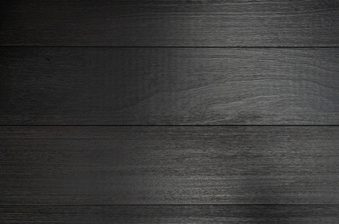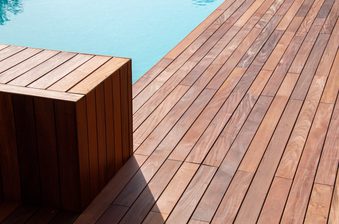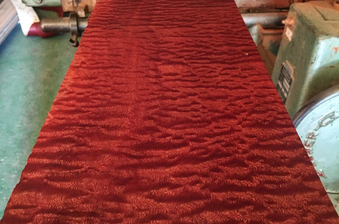Different projects require different types of timber, and most of us will have encountered the terms ‘hardwood’ and ‘softwood’.
But what are the differences between these two groups of wood? How can I tell them apart? What are key uses of both? Let’s dive straight in…
What is the difference between hardwood and softwood?
Hardwoods and softwoods are distinguished by the tree they come from. Hardwoods derive from angiosperm trees; mostly deciduous, these have broad leaves that fall every autumn. Softwoods come from gymnosperm trees, like conifers. These have needles that remain evergreen year round. Because hardwood trees grow slower than softwood trees, their timber is usually denser and stronger.
What are hardwoods?
Hardwoods come from trees classified as angiosperms that reproduce with a flowering plant, like oak, walnut and maple. Found in temperate and tropical forests around the world, hardwood trees are mostly deciduous, having broad leaves that change colour and fall off in the autumn and winter. These leaves all have a network of fine veins.
The structure of a hardwood is typically more complex than that of a softwood. As a rule, they grow more slowly than softwood trees — they can take up to 150 years before being ready to harvest — which results in the timber harvested from them being more dense, heavy and hard wearing.
The word angiosperm translates as ‘enclosed seed’ — the tree’s seeds are housed in an ovule, such as a fruit or nut. These seeds don’t spread as easily, resulting in hardwood trees often being more clustered.
What are softwoods?
Softwoods come from gymnosperm trees, such as conifer (evergreen) trees. These trees — like pines, cedars and spruces — have needle-like leaves that usually remain green year-round, as opposed to broad leaves that shed annually. Softwoods grow faster than hardwoods, usually taking around 40 years before being ready to harvest. This fast-growing nature tends to make them less dense than hardwoods.
The word gymnosperm translates from Greek literally to mean ‘revealed seed’; this is because the seeds from these trees — such as pine cones — are not enclosed in an ovule. They have no form of housing. This means they’re able to spread much more easily and quickly than hardwoods, sometimes even as a result of wind.

Hardwood vs. softwood: cell structure
One key distinction is the presence of visible pores (or vessels) within hardwoods, used for transporting water and nutrients. This structure can be seen under a microscope. In softwoods, there is a simpler cellular structure. Here, water is moved around the tree by cells called longitudinal tracheids and medullary rays, which do not contain visible pores, and produce sap.

Wood is essentially composed of tubular units condensed together. This cellular structure is fundamental to the properties of each specific type of wood. The pores present in hardwoods are what give them a more prominent, heavier grain when compared to softwoods.

Hardwood vs. softwood: strength
As suggested by the name, as a rule, hardwoods are stronger and more hard-wearing than softwoods. This is because of their slower growth time and more complex, condensed structure, which results in greater density of the harvested timber. As a general rule, higher density equals higher strength and durability.
However, as with all rules, there are a few noteworthy exceptions. Behold, ‘hard’ softwoods, and ‘soft’ hardwoods. Yew is a softwood with a dry density of 670 kg/m³, making it harder than American Cherry, classified as a hardwood despite being an inferior 560kg/m³. Then, at the extreme end of the spectrum, you’ve got Balsa wood, classified as hardwood — but coming in at extremely soft 160kg/m³ density!
Hardwood vs. softwood: durability
Because of their more complex, condensed structure, hardwoods usually perform better when exposed to the elements, as well as having superior fire resistance. Softwoods that are intended to stand up to the elements — such as garden furniture — are usually treated, or ‘tanalised’, to bolster their exterior performance. Both hardwoods and softwoods will weather to a silvery-grey if left untreated.
That said, there are some naturally-durable softwoods. When Western Red Cedar is exposed to the elements, it can fare exceptionally well — even without treatment. Other popular commercial softwoods, like Siberian Larch, are moderately durable, able to withstand much of the weather, as well as a few knocks and bumps along the way.
Treated softwoods
Softwoods can be modified to enhance their physical properties so that they are more like hardwood in terms of strength, durability, appearance and stability. Products like Thermo-Tulipwood are thermally modified to improve their exterior performance.
Then there’s ThermoWood®, starting as a European Redwood softwood that becomes a thermally-treated, decay-resistant and highly-stable end product, much resembling a tropical hardwood.

How to tell the difference between hardwood and softwood
Hardwoods and softwoods are distinguished by the tree that they come from, not necessarily by their appearance or properties — although this can certainly give a good clue.
- Grain: Softwoods do not have vessels and therefore have a softer, less pronounced grain than hardwoods, which are characterised by a heavy, distinctive grain.
- Colour: Hardwoods tend to be darker than softwoods, which are often lighter.
- Hardness: Hardwoods are usually stronger, more scratch resistant and harder wearing. If the wood chips easily with a chisel, it’s most likely a softwood.
- Weight: Because of their superior density, hardwoods are usually heavier than softwoods.
To truly distinguish whether something is a hardwood or softwood, you ideally need to learn the species of the tree that the wood came from. If it came from an angiosperm tree (usually broadleaved and deciduous), it is a hardwood. If it is of a gymnosperm tree (usually coniferous with needle-like leaves), it is classed as a softwood.
If you’re looking at a tree rather than some timber, the leaves are usually a good place to start when trying to tell the difference. Usually, softwood trees have needles and remain green all year round; hardwood trees usually have broad leaves that change colour and die every autumn. All hardwood trees will have a fine network of veins on their leaves.
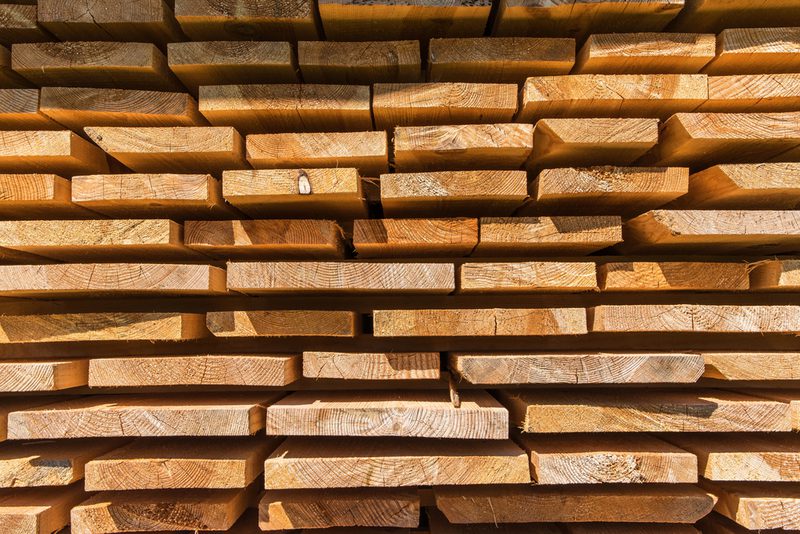
Hardwood vs. softwood: cost
Because they are faster growing, easier to source and as a result more abundant, softwoods are usually considerably cheaper than hardwoods. However, the cost of any given hardwood or softwood depends entirely on the product and species chosen, as well as, of course, the volume required.
Some types of softwood are particularly popular for certain applications as a result of their beauty and durability — introducing Western Red Cedar. As a result, these may actually fetch a higher price than less-in-demand hardwood equivalents!
Hardwood vs. softwood: workability
Generally speaking, hardwoods are more complicated and time consuming to machine and work with. They also usually don’t take finishes, paints or other treatments as easily as softwoods. Superior tools are required to work with woods that have higher density.
Hardwood vs. softwood: environmental impact & sustainability
Both hardwood and softwood remove carbon dioxide and are 100% renewable, but softwood is usually the more environmentally-friendly option. This is simply because these trees grow faster than their hardwood counterparts, meaning they can be replenished faster. However, by sourcing timber from sustainably-managed forests, rest assured that hardwoods can be very kind to our planet, too.
The consumption of wood from sustainably-managed forests helps our environment; the growth of new trees consumes harmful greenhouse gases from the atmosphere.
Make sure you purchase your timber from a merchant with a clear commitment to sustainability — like us! Consider specifying PEFC™ and FSC®-certified timbers if you’re looking to make the ultimate environmental statement; these are internationally-recognised, third-party endorsements of a forest’s sustainability.

Hardwood and softwood trees: list & examples
Did you know that the world is home to over 60,000 species of tree? If we wanted to provide an exhaustive list, it’s safe to say that we’d be here a pretty long time!
So, let’s explore a few of the most common types of hardwood and softwood tree families, where they come from, what common species there are and what their wood tends to look like.
Hardwood examples
Oak
This encompasses a huge range of species from right across the world — over 600, in fact — including European Oak (Quercus robur), American White Oak (Quercus alba), Black Oak (Quercus velutina), Red Oak (Quercus rubra) and many more.
Although there can be quite a lot of variety in their appearance, oaks are usually characterised by a timeless, versatile golden-to-tan brown colour and a straight grain.


Walnut
Within the walnut family, there are 21 species of tree. Native to North America, Europe and Asia, these include American Black Walnut (Juglans nigra), White Walnut (Juglans cinerea), English Walnut (Juglans regia) and more.
Walnut woods are prized hardwood for their strength, grain and colour. These types of timber are dense, tight-grained and usually a chocolate-brown colour, with a purple tinge — although there are paler types of walnut.

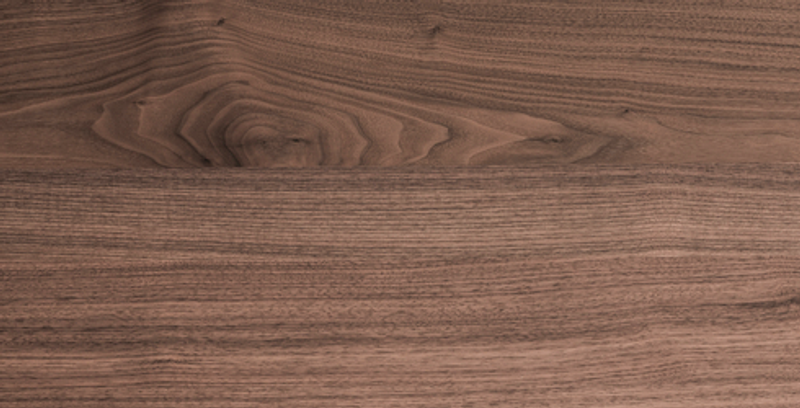
Beech
Native to Europe, North America and Asia, common species of beech include European White Beech (Fagus sylvatica), American Beech (Fagus grandifolia) and Japanese Beech (Fagus crenata). Beech woods usually have a pale cream colour, sometimes with pink hues.
Maple
Maple woods are a classic pale timber, boasting an attractive, clean pale cream colour, sometimes with a red tinge. There are 132 species of maple tree, most of which are native to Asia, but can also appear across Europe and North America and northern Africa.
This can include American Hard Maple (also known as Sugar Maple, Acer saccharum), Amur maple (Acer ginnala) and Boxelder Maple (Acer negundo).

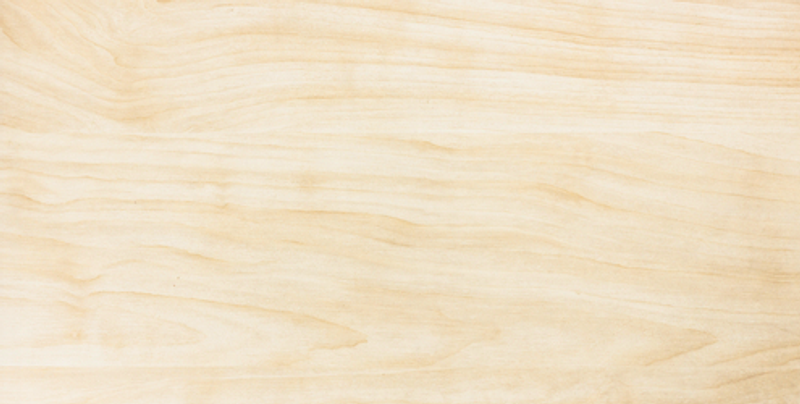
Ash
Common ash tree species include White Ash (Fraxinus americana), Black Ash (Fraxinus nigra) and European Ash (Fraxinus excelsior). Ash wood is usually straight grained and characterised by a pale beige-to-light brown colour.
Tropical
Within any list of hardwoods, it would be remiss of us to not also give mention to the incredible African timbers. Sought after for their unique appearance coupled with their high performance, these can include Iroko, Wenge, Utile, Zebrano. Explore our African hardwood guide for a full low-down on these exotic woods.
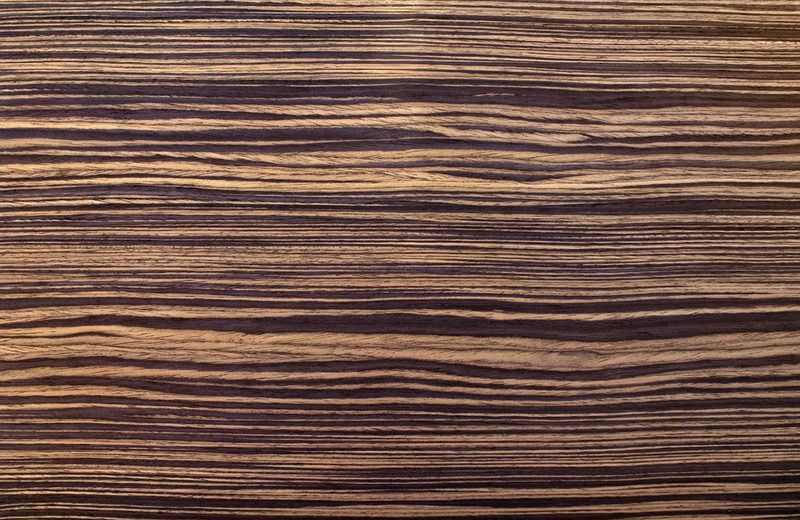
Other common examples of hardwoods include mahogany, hickory, teak, alder, cherry and — the softest hardwood in the world — balsa wood.
Softwood examples
Pines
Perhaps considered to be the quintessential softwood, species of pine find their home right across North America, Europe and Asia.
Any tree that falls within the genus Pinus (be careful of the pronunciation!) can be classed as a pine tree. There are over 126 types, although some of the most common include Scots Pine (Pinus sylvestris), Black Pine (Pinus nigra) and Eastern White Pine (Pinus strobus).
Due to the many types of pine that exist, colour variance is a feature of this type of softwood. Most species are characterised by a reddish-yellow heartwood that darkens to a reddish-brown over time, although there are almost-white species of pine — see Siberian Pine (Pinus sibirica).
Cedars
There are many different types of trees that we call cedars.
Those with Cedrus in their botanical name are often classified as ‘true cedars’, but we also use cedar to refer to other trees, which some call ‘false cedars’. What they all have in common, fortunately, is that they are conifer trees — and therefore are softwoods.
One of the popular species that we group as a cedar is Western Red Cedar (Thuja plicata) and Alaskan Yellow Cedar (Cupressus nootkatensis). Interestingly, there are only four ‘true cedars’ — Cypriot cedar (Cedrus brevifolia), Deodar cedar (Cedrus deodara), Lebanon cedar (Cedrus libani) and Atlas cedar (Cedrus atlantica).
Although they can vary in their colour and grain from species to species, many architects, designers and home improvers cherish species like Western Red Cedar for their beautiful reddish-brown colour and straight grain, something common to many other types of cedar.


Spruces
Approximately 35 species of coniferous evergreen trees fall into the spruce group, spread across the temperate and boreal regions. One of the most common includes Norway spruce (Picea abies), which is used as a Christmas tree in many countries around the world. Spruce’s colour varies from pale creamy-yellow to a reddish-brown.
Firs
Over 40 types of tree belong to the fir group, spread across North America, Europe, Asia and northern Africa. They are very closely related to cedars.
Like cedars, there are a number of trees that we group as firs but don’t actually have the botanical name Pinaceae — often referred to as ‘false firs’. One such tree includes the ever-popular Douglas Fir (Pseudotsuga menziesii).
Rest assured, whether true or false fir, all the trees we commonly refer to as firs are conifers — and therefore softwoods!
Redwoods
Also known as Sequoioideae, redwoods are a large family of coniferous — and therefore softwood — trees found in south-central China and North America. They are renowned for their immense size. In fact, the tallest tree in the world is of the Coastal redwood species (Sequoia sempervirens).

Some other common softwood trees we haven’t mentioned include types of yew and juniper.
Hardwood and softwood: uses
Wood from the trunk of any hardwood and softwood tree can be used for large-scale building to small-time hand carving and umpteen applications in between. Some of the most common include construction work, furniture, cladding, fencing and decking.
The branches, tops of trees and other small trees can be used for pulping in the production of paper, cardboard, newspapers, books, wallpaper, toilet paper, stationery and more. Leftover bark and other parts of trees can be used for woodfuel, wood pellets, chippings, sawdust and wood shavings.
So, it’s safe to say that wood is an incredibly versatile resource — but what are the differences in uses of hardwood and softwood?
What is hardwood used for?
Strong and durable, hardwoods are preferable for any high-impact structure, surface or construction project intended to last for a long time. As a result of their more decorative, grainy appearance and hard-wearing nature, hardwoods are also popular for high-end furniture.
- Construction (such as timber-framed buildings)
- Flooring
- Fencing
- Decking
- Boatmaking
- Luxury furniture
- Cladding
Some more niche applications for hardwoods include cricket bats (made from white willow), guitars, smoking pipes and walking sticks. As hardwoods can be more challenging to work with and are usually more expensive, softwoods have more general uses. Sometimes, softwood products can have a hardwood veneer.
What is softwood used for?
It’s estimated that 80% of all timber consumed globally comes from softwood trees — testament to their versatility and applicability. Due to their less dense and hard-wearing nature, softwoods are usually used for temporary, lower-impact construction, where time or budget may be short. Treated softwoods are still able to perform just as well as hardwoods when used outdoors.
- Doors
- Window frames
- Picture frames
- DIY craft
- Flooring (usually with a hardwood veneer)
- Firewood
- Building components, fixtures and fittings
- Roof and inner wall structures
- Props and trusses in construction
- Paper manufacture
- Ceilings
- Wood carving
- Furniture making
- Carpentry
- Cabinet making
- Fencing
- Cladding
- Decking
- Engineered and man-made woods (plywood, fibreboard and MDF)
As well as being easier to handle, softwood takes finishes like paint and stain very well, making it popular for home woodworking. Christmas trees are softwood, which you’ll know if you’ve ever had to deal with the residual needles!
Got more timbery questions?
For over three generations, we’ve been a leading UK supplier and merchant of timber and timber products — high-quality sawn timber, decking, cladding, fencing and more. As a result, we know a thing or two when it comes to wood!
For any other questions, or to learn more about our timber products, get in touch with our team of experts.

